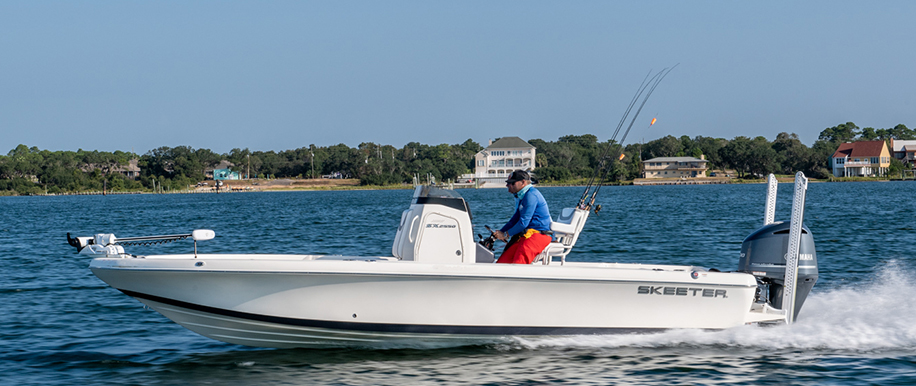EPIRB: Essential Guide for Maritime Emergency Situations
Emergency Position Indicating Radio Beacons, or EPIRBs, are life-saving devices often used on commercial and recreational boats.

These portable, battery-powered radio transmitters serve a vital role in marine emergency situations by sending out distress signals. This allows rescue teams to locate those in need quickly and efficiently.
With the proper use and maintenance of EPIRBs, the chance of successful rescue operations is significantly increased.
Understanding the different types of EPIRBs and their respective functionalities is crucial to ensuring their effective operation in emergency situations.
Furthermore, EPIRB owners must ensure registration and compliance with relevant regulations to aid search and rescue operations.
Maintaining and troubleshooting the device as necessary also plays an essential role in increasing the overall safety of a vessel.
Being aware of additional emergency beacon technology available may further enhance preparedness in the face of potential emergencies.

Key Takeaways
- EPIRBs are essential devices for transmitting distress signals and aiding in the location of those in need during marine emergencies.
- Proper registration and maintenance of EPIRBs can significantly increase the chances of successful rescue operations.
- Being well-informed about the different types of emergency locator beacons available can further enhance safety and preparedness in maritime emergencies.
Understanding EPIRBs
Technology and Operation
EPIRBs, or Emergency Position Indicating Radio Beacons, are lifesaving devices used in maritime environments to alert search and rescue teams in case of emergencies.
These devices operate using the COSPAS-SARSAT satellite system, providing global coverage and accurate position detection1.
EPIRBs typically transmit on two frequencies, 406 MHz and 121.5 MHz2.
The 406 MHz frequency enables accurate positioning while the 121.5 MHz frequency serves as a homing signal for rescue teams1.
Some modern EPIRBs are also equipped with GPS technology, further enhancing their position accuracy3.
Upon activation, EPIRBs transmit a repeating SOS signal that is detected by earth-orbiting satellites4.
The signal is then forwarded to a ground station for verification before the search and rescue teams are alerted4.
An important component of the EPIRB system is the hydrostatic release, a mechanism that automatically activates and releases the EPIRB when submerged in water, typically within 2-4 meters of depth15.

Types of EPIRBs
There are several types of EPIRBs available, depending on their intended sea area and frequency band2. Here is a brief overview:
- COSPAS-SARSAT EPIRBs2: These EPIRBs work on the 406.025 MHz and 121.5 MHz bands and are applicable for all sea areas. They offer a position accuracy of 2-5 kilometers (1.2-3.1 miles) or better with GPS-equipped models3.
- INMARSAT E EPIRBs2: These EPIRBs operate on the 1.6 GHz band and are applicable for sea areas A1, A2, and A3.
- VHF CH 70 EPIRBs2: These EPIRBs work on the 156.525 MHz band and are applicable for sea area A1 only.
Prices for EPIRBs can range from $200 to about $15005.
Proper registration and maintenance of these devices are crucial for ensuring their effectiveness in case of emergencies. Investing in an EPIRB is an essential safety measure for anyone venturing out in the maritime environment.
Footnotes
- https://primonautic.com/blog/understanding-epirb/ ↩ ↩2 ↩3
- https://www.marineinsight.com/marine-safety/what-is-epirb-emergency-position-indicating-radio-beacon/ ↩ ↩2 ↩3 ↩4 ↩5
- https://www.seamagazine.com/epirb-essential-guide-to-maritime-distress-beacons ↩ ↩2
- https://www.boatus.org/epirb/work ↩ ↩2
- https://navcen.uscg.gov/emergency-position-indicating-radiobeacon ↩ ↩2
Registration and Compliance
Importance of Registration
Registering your EPIRB (Emergency Position Indicating Radio Beacon) is crucial for ensuring the effectiveness of the search and rescue operations.
Proper registration allows authorities to respond promptly and accurately to distress signals.
In the United States, for example, the Coast Guard enforces registration rules set by the Federal Communications Commission, and a registered EPIRB might make the difference in life-saving situations.
Apart from the United States, other countries, such as Canada, also emphasize the need for registering EPIRBs.
Registration helps:
- Speed up the rescue process
- Confirm the authenticity of distress signals
- Provide valuable contact information for SAR (Search and Rescue) teams
International Regulations
Internationally, EPIRB regulations are governed by bodies such as the International Maritime Organization (IMO). The IMO has established guidelines for the annual testing of EPIRBs. These guidelines ensure their proper functioning and compliance with safety standards.
The Cospas-Sarsat Program, an international satellite-aided search and rescue initiative, operates the International Beacon Registration Database (IBRD) for 406 MHz EPIRBs. The database aids in processing distress alerts, routing them to local SAR authorities, and facilitating EPIRB registration.
It is essential to note that some beacons are not yet authorized for use in certain countries. For instance, second generation beacons (SGBs) are not authorized for use in the United States, and their distress signals will be processed only after official authorization.
Deployment in Distress Situations
Manual and Automatic Activation
EPIRBs (Emergency Position-Indicating Radio Beacons) are designed to send out distress signals in emergency situations, helping rescue teams locate vessels or individuals in distress at sea. There are two main methods of activating an EPIRB: manual and automatic.
In a distress situation, the manual activation of an EPIRB typically involves pressing a dedicated button on the device. This functionality is essential for situations where the mariner may not have time to wait for automatic activation or if the device's sensors fail to detect the need for an emergency alert.
Automatic activation occurs when specific conditions are detected by the EPIRB, such as being submerged in water. The Category I bracket (Float Free) is designed to release an EPIRB when the Hydrostatic Release Unit (HRU) in the bracket is submerged in water at a depth of 5 to 13 feet (1.5 - 4m). This range of depth allows for different water temperatures, which can affect the release depth.
Distress Alerting Procedures
When a boater encounters a distress situation, the following steps outline the general alerting procedure using an EPIRB:
- In case of an emergency, activate the EPIRB manually or let it automatically activate (e.g., if submerged in water).
- The EPIRB sends a distress signal at 406 MHz, which is detected by earth-orbiting satellites.
- The satellites relay the distress signal to search and rescue (SAR) services.
- SAR teams use the distress signal's information, including location data and vessel identification, to reach the vessel or individual in distress.
It is crucial to understand that EPIRBs operating at 406 MHz are more reliable than their older 121.5 MHz counterparts. Data from BoatUS Foundation reveals that with a 121.5 MHz beacon, only one alert out of every 50 is a genuine distress situation. This distinction emphasizes the importance of using the latest EPIRB technology to ensure a fast and accurate response during maritime emergencies.
Rescue Operations and Coordination
SAR Services
Search and rescue (SAR) services play a vital role in responding to distress situations in maritime and aviation environments. These services coordinate with different Rescue Coordination Centers (RCCs) to ensure the success of rescue operations. The U.S. Coast Guard and the Air Force Rescue Coordination Center are examples of organizations that provide support during SAR operations.
A few important features of SAR services include:
- Coordinating and controlling search and rescue operations within their area of responsibility (AOR)
- Ensuring the availability of rescue resources (such as ships, helicopters, and other vessels)
- Assessing weather conditions and other factors that might impact the mission
Role of Satellites in SAR
The relevance of satellites in search and rescue operations has increased significantly, thanks to the Cospas-Sarsat Program. This international satellite-based search and rescue system uses earth-orbiting satellites to detect and locate distress signals emitted by Emergency Position-Indicating Radio Beacons (EPIRBs).
Since EPIRBs may not be equipped with an integrated GPS receiver, they rely on satellites to help provide accurate location data for distressed vessels. Among the satellites utilized in SAR operations are the GOES weather satellites, which contribute to the efficient coordination among different SAR providers and rescue coordination centers.
Key steps involved in EPIRB-based SAR operations:
- EPIRB Activation: Boater in distress activates the 406 EPIRB
- Signal Detection: EPIRB's repeating SOS signal is detected by earth-orbiting satellites
- Signal Verification: Ground station forwards the signal for verification
- Notification: Ground station notifies central command (MCC) to initiate search and rescue
- Coordination: MCC notifies the Coast Guard or Air Force Rescue Coordination Center to launch a rescue operation
Additional Emergency Beacon Technology
In the field of maritime safety, there are different types of emergency beacons used for various purposes. This section will explore some of these technologies and recent advancements made to improve their efficiency and reliability.
PLBs and ELTs
Personal Locator Beacons (PLBs) and Emergency Locator Transmitters (ELTs) are two other forms of emergency beacons that complement the use of EPIRBs. While EPIRBs are specifically designed for maritime use, PLBs and ELTs have broader applications.
A PLB is a portable device intended for individuals, mainly used in land-based situations but can also be utilized in marine environments. PLBs transmit distress signals on the 406 MHz frequency to the Cospas-Sarsat satellite system, similar to EPIRBs.
An ELT is designed for use in aviation and is installed on aircraft. While they transmit on 406 MHz and 121.5 MHz frequencies, satellite processing for 121.5/243 MHz ceased in 2009. Alerts from these beacons now require independent confirmation by two non-satellite sources.
Advancements in Beacon Technology
Several advancements have enhanced the efficiency and reliability of emergency beacons. Devices like GPIRBs (GPS-equipped EPIRBs) for example, provide a quicker location pinpointing with a built-in GNSS/GPS receiver.
One notable advancement is the Automatic Identification System (AIS), which is a tracking system for ships and other maritime assets. Integrating AIS technology into beacons allows for faster detection and position updates, ultimately improving the chances of a successful rescue operation.
The Return Link Service (RLS) is another development in the emergency beacon technology. RLS, provided by the Galileo satellite system, can confirm the receipt of a distress signal and send an acknowledgment message back to the sender. This feature increases the confidence in the system's effectiveness during emergency situations.
Maintenance and Troubleshooting
Battery Replacement and Servicing
Regular battery replacement and servicing are essential for ensuring that your EPIRB functions correctly. The battery life of an EPIRB plays a crucial role in the effectiveness of the emergency beacon.
It's important to check the expiration date of your EPIRB's battery and replace it before it expires. Always follow the manufacturer's guidelines for battery replacement to ensure proper performance.
In addition to battery replacement, it's necessary to perform regular visual inspections. Carefully inspect your EPIRB for signs of damage, corrosion, or water ingress. Pay close attention to the antenna and the strobe light to make sure they are intact and functioning properly.
False Alarm Prevention
False alarms can be a serious issue for search and rescue operations. It's essential to actively prevent false alarms from your EPIRB in order to avoid wasting valuable resources on non-emergencies.
To help prevent false alarms, follow these guidelines:
- Stow the EPIRB securely: Make sure the EPIRB is properly mounted in its bracket. Also, ensure that the bracket is securely fastened to your vessel. This will help prevent accidental activation.
- Regularly test the EPIRB: Some EPIRBs have self-test functions, but it's still important to perform routine tests to verify that the EPIRB is functioning as expected. Follow the manufacturer's instructions for testing and maintenance.
- Educate your crew: Make sure that everyone on your vessel is familiar with the EPIRB, how it works, and when it should be activated. Proper education on the use of emergency beacons can help prevent accidental activations.
By performing regular maintenance, ensuring proper battery life, and taking steps to prevent false alarms, you can help ensure that your EPIRB is an effective and reliable safety device in emergencies.
Vessel Requirements and Recommendations
Mandatory and Voluntary Carriage Requirements
In most cases, emergency position-indicating radio beacons (EPIRBs) are mandatory for certain vessels as per federal or national regulations.
For instance, in the United States, 46 CFR 199.510 states that all vessels must carry a category 1 406 MHz satellite EPIRB. The EPIRB must be stored in a float-free bracket with controls set for automatic activation and should float free if the vessel sinks.
The International Maritime Organization (IMO) has also set guidelines on annual testing for EPIRBs. Vessel operators must keep their equipment well-maintained to ensure proper functioning during emergencies.
Choosing the Right EPIRB
When selecting an EPIRB, it is essential to consider the specific needs of your vessel and the budget.
EPIRBs, such as the McMurdo Smartfind, have features for both maritime and aviation use, ensuring versatility.
General factors to consider while choosing an EPIRB include:
- Frequency: The 406 MHz frequency is the global standard for EPIRBs and offers enhanced alerting capabilities through satellite systems.
- Battery life: EPIRBs with longer battery life span are advantageous, as they can transmit signals for an extended period during an emergency, improving the chances of timely rescue.
- GPS integration: EPIRBs with integrated GPS generate more accurate location data, further aiding search and rescue efforts.
- Water activation: EPIRBs with a capability of self-activating upon contact with water, like the McMurdo Smartfind G8 model, offer additional safety and convenience.
- Registration: Proper registration of your EPIRB is crucial, as it enables rescuers to access vital information about your vessel and expedite search and rescue operations during emergencies.
Frequently Asked Questions
How does an Emergency Position-Indicating Radio Beacon (EPIRB) work?
An EPIRB is a critical piece of safety equipment used to alert search and rescue services in case of an emergency at sea.
When activated, an EPIRB transmits a distress signal via satellite, which then relays the signal to rescue authorities. The distress signal includes the vessel's position, allowing for a quicker response from search and rescue teams. More information can be found in this essential guide to maritime distress beacons.
What is the effective range for transmitting a distress signal from an EPIRB?
EPIRBs operate on the 406 MHz frequency band, providing worldwide coverage through the COSPAS-SARSAT satellite system. This ensures a reliable transmitted signal and position location accuracy, regardless of the vessel's location. More information on the range and functionality of EPIRBs can be found at Sartech.
What is the typical battery life span of an EPIRB?
The battery life of an EPIRB typically lasts for 5 to 10 years, depending on the device model and usage.
It is essential to routinely check the battery and expiry date to ensure optimal performance in an emergency situation. Regular self-tests, as outlined by the BoatUS Foundation, are recommended to verify the internal circuitry, battery voltage, and power output of the 406 MHz signal.
How should you properly use an EPIRB in an emergency situation?
In the event of an emergency, an EPIRB should be activated only when the vessel and its occupants are in grave and imminent danger.
Activation switches vary between devices, so it is essential to familiarize yourself with the operating procedures of your EPIRB, as explained in this Coast Guard EPIRB FAQ.
What are the different types of EPIRBs available?
There are two main types of EPIRBs: Category I and Category II.
Category I EPIRBs are automatically activated when submerged in water, and Category II EPIRBs are manually activated. Both types are designed to float free from a sinking ship and transmit an automatic distress signal.
What are the primary differences between a Search and Rescue Transponder (SART) and an EPIRB?
The primary difference between a SART and an EPIRB is their purpose and functionality. A SART is designed to transmit a signal to a radar-equipped search and rescue vessel during final approach. Meanwhile, an EPIRB transmits a distress signal directly to rescue authorities via satellite.
EPIRBs provide global coverage and position location accuracy, while SARTs operate within line-of-sight and close-range situations.
Charlie is Editor-in-Chief of Sea Magazine







